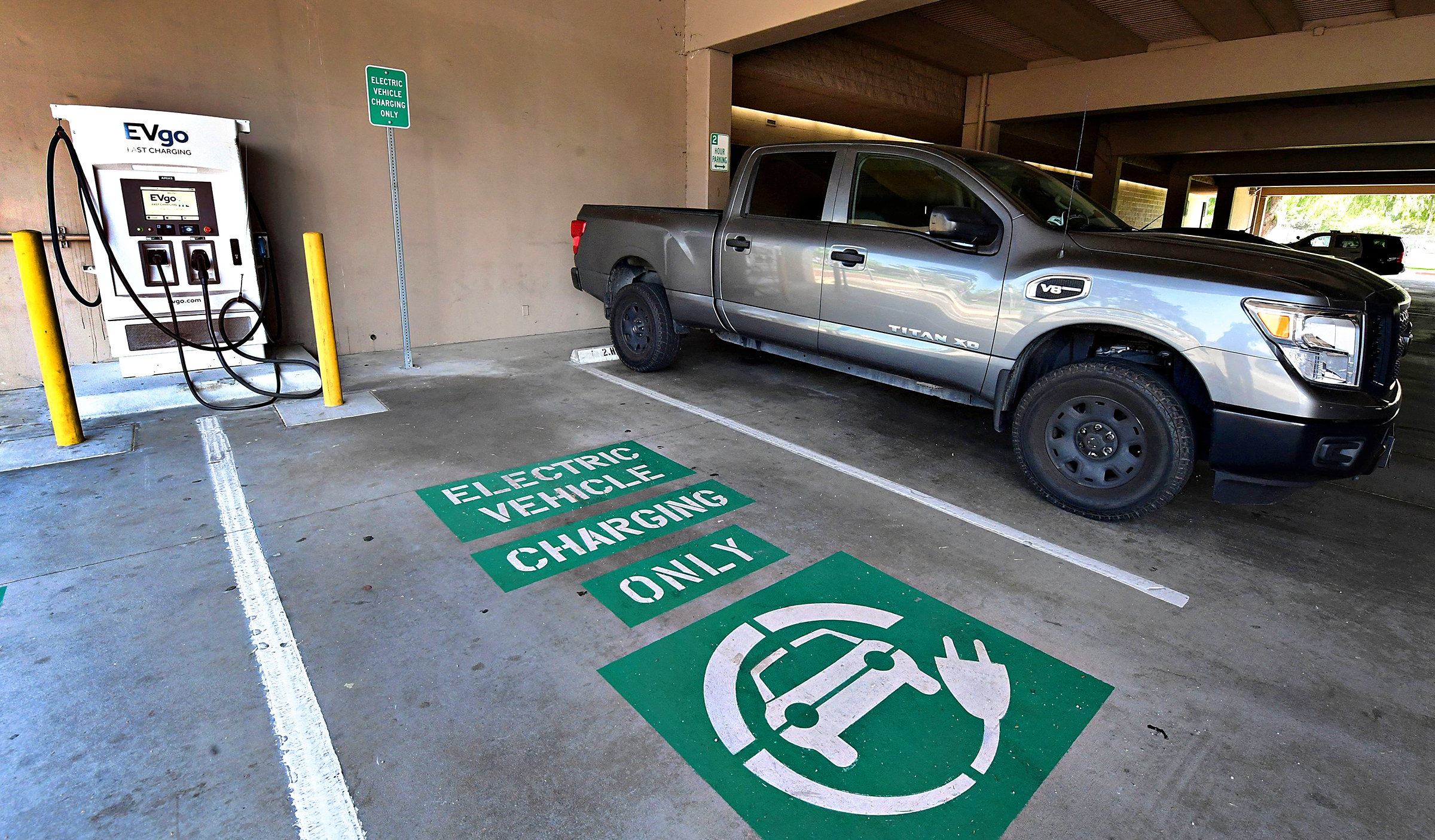Electric vehicle rebates for lower-income buyers go virtually unused in Connecticut

A space remains open for an electric vehicle at a EV charging station in Monterey Park, California on May 18, 2021. (Photo by FREDERIC J. BROWN/AFP via Getty Images)
A Connecticut-run incentive designed to help low- to middle-income buyers purchase an electric vehicle continues to struggle.
New data show income-eligible rebates accounted for only about 1% of all rebates issued through the state’s Connecticut Hydrogen and Electric Automobile Purchase Rebate (CHEAPR) program.
“That’s not a significant uptake,” said Anthony Cherolis, who is with the Center for Latino Progress and is a member of the CHEAPR board. “The concept of low- to moderate-income EV rebates and having a higher level of them is great, we just haven’t actually closed the gap to make it happen.”
Right now, CHEAPR rebates break down into two major buckets.
First is the “standard” rebate, which functions as “cash on the hood” during an EV purchase. Qualifying EVs get up to a $2,250 credit deducted from the car’s invoice at the dealership.
In June 2021, in an effort to broaden the appeal of EVs, CHEAPR launched two income-qualifying programs: “Rebate+ New” and “Rebate+ Used.”
The idea was to increase incentives for low- to moderate-income buyers. To qualify, buyers must participate in programs like Medicaid or the Supplemental Nutrition Assistance Program (SNAP).
But there’s a catch. In order to get the additional money, buyers must first purchase the vehicle. Then they submit paperwork proving their income eligibility and hope their application gets approved.
“We’re asking a low-income household to float a $2,000 loan while they’re waiting on that rebate,” Cherolis said. “That doesn’t work well.”
Data presented by the state Department of Energy and Environmental Protection during a recent CHEAPR board meeting show that the two enhanced Rebate+ programs have gone virtually unused.
Since launching last June, only 14 “plus” rebates have been issued, accounting for about 1% of the nearly 1,000 CHEAPR rebates issued during that time period.
Tracy Babbidge, with the Connecticut Department of Energy and Environmental Protection, told members of the CHEAPR board Thursday that the state is aware of issues connecting with low- to moderate-income buyers.
She said DEEP is now asking questions about how to fix the problem.
“How can we look at broadening the eligibility and streamlining the qualification process?” she asked. “Are there other mechanisms like utilizing census tract or other income thresholds? We continue to look at that.”
“Incentivizing behavior change has been proven to work,” said Shelley Francis, co-founder of EVHybridNoire, which works to increase the equitable adoption of electric vehicles.
But Francis said that when federal and state purchase incentives are removed from point of sale, it can exclude buyers in vulnerable and disadvantaged communities.
“Making that effective at the time of purchase really makes it more accessible for all,” Francis said. “It really needs to be placed on the front end, versus the back end.”
A possible legislative remedy?
Connecticut state legislators are now considering a bill to overhaul parts of the CHEAPR program.
If S.B. No. 4 is approved, the bill could expand income eligibility standards for rebate incentives to reach more moderate-income buyers and provide “cash on the hood” rebates of $5,000 to residents in lower-income environmental justice communities.
The proposal would also extend rebates for the purchase of electric bikes, which Cherolis said “is one entry point that is a lot more affordable for a low-income household.
“As long as the rebate is sufficient enough to make that work,” he said.
If the proposed CHEAPR updates can make purchase math pencil out for more buyers interested in an EV, Cherolis said the stalled income-eligible rebate program could begin to accelerate.
“If a program makes financial sense, word-of-mouth is super powerful,” Cherolis said. “Folks that are really looking for the best deal … tell everybody.
Click here to listen to the audio version of this story at ctpublic.org.
